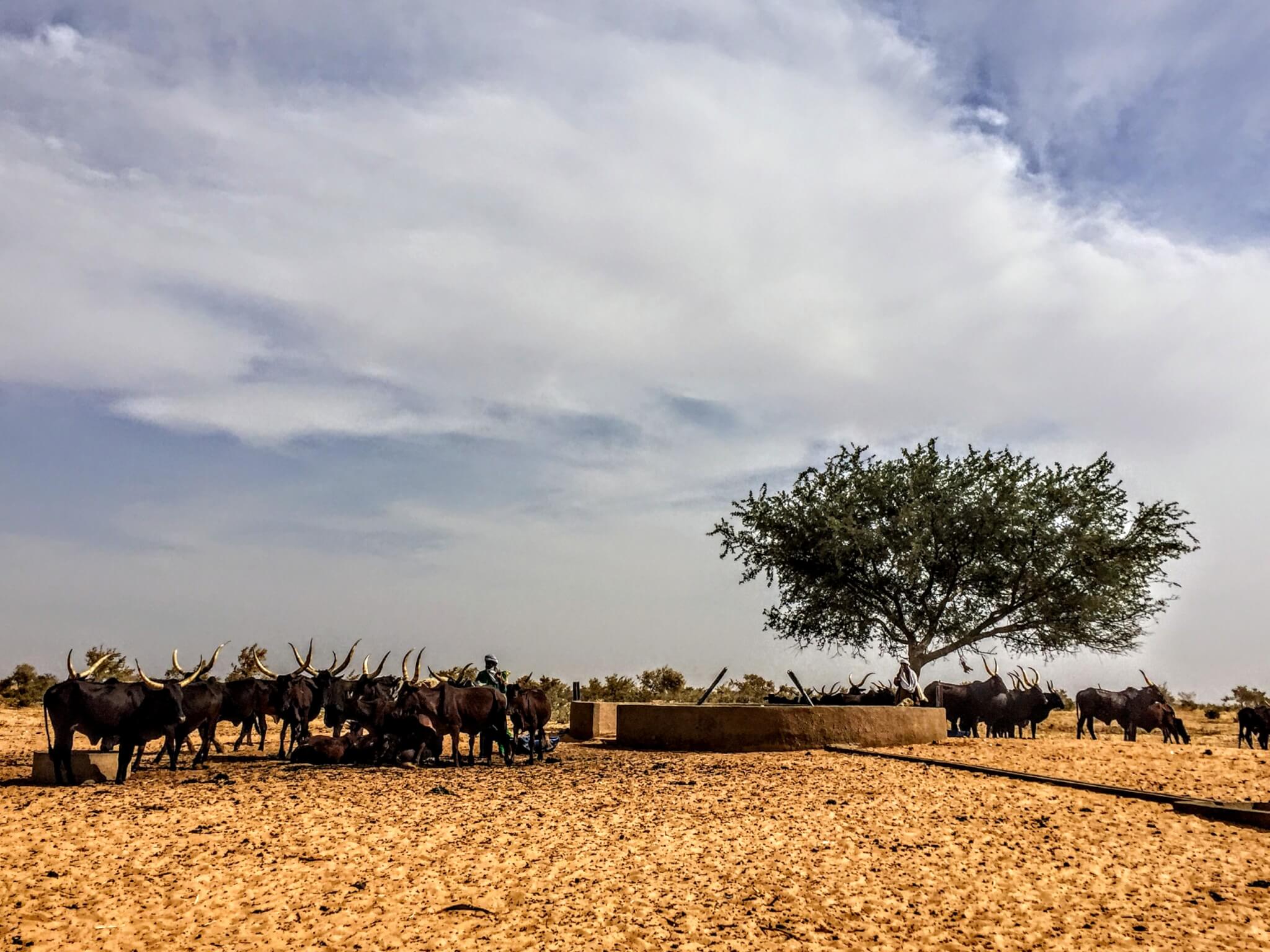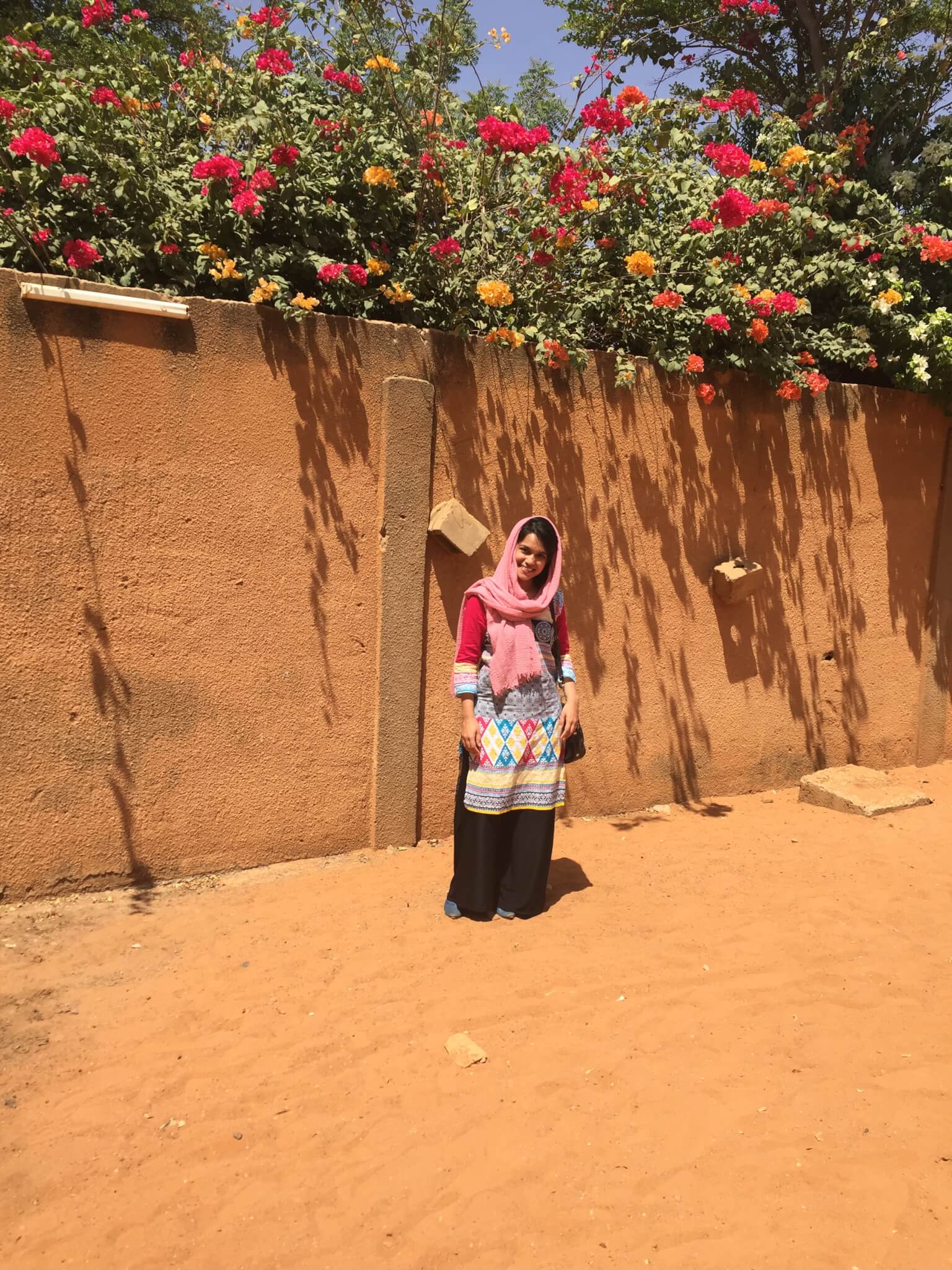Persistence pays off as agricultural economics Ph.D. student delves into issues of food insecurity in Niger
Kayenat Kabir, a Ph.D. student in Purdue University’s Agricultural Economics Department, is the first to admit that she did not follow a traditional path in the department while pursuing her doctorate degree.
In 2015, Kabir gave up her job in the UN World Food Programme to start her Ph.D. at Purdue. She hails from Bangladesh, where she worked for many years in rural market development and emergency response. It was this experience at field level that prompted her to pursue her Ph.D. with the hope of returning with a better understanding for how agricultural practices, climate change, population growth and other factors impact food security in developing countries.
Kabir’s research interest took her to Niger, a landlocked country in the Sahelian region of Africa, which is identified as one of the most vulnerable locations in the world due to its high exposure to climate change and low adaptive capacity. Niger is in the throes of a rural population boom in a vastly unfertile territory with the highest fertility rate in the world and the lowest human development index.

According to her advisor Tom Hertel, Kabir’s research is unique because of its location, focus and her commitment to disseminating the information acquired in her studies.
“Kabir decided, with input from her committee, that Niger was the most relevant country in the region for analysis of food security in the face of climate change. Unlike many others working on Sub-Saharan Africa, she is not part of a big project. She is a great example of what a motivated student can do,” he said.
Kabir constructed an economic model of Nigerien agriculture to understand which factors contributed most to food insecurity in Niger. She examined factors like population growth, agricultural productivity, trade policy, climate change and income growth; and found high population growth rate is the single largest driver of food insecurity in Niger. Constructing a Niger specific model involved collecting, incorporating and running secondary data.
“I actually had to go to Niger to collect secondary data,” Kabir continued. “Researchers typically travel to gather primary data, but it’s not like here in the US where you can find a lot of the information online. I went there, followed leads and leveraged my contacts basically to find the one person who had the data I needed on their laptop. It was sort of like the Amazing Race.”
“It was also important for me to go to Niger and understand the country context and the culture,” Kabir added. “It leads to a better paper and a more accurate model.”
Kabir noted that her research project faced its own unique challenges since she was constantly patching together travel funds and working to overcome language and cultural barriers. It is difficult, she explained, to attract funding when you’re traveling to collect secondary data instead of primary data. Kabir said during her research she received ample support from sources such as Jim and Neta Hicks Grant and Purdue Climate Change Research Center, which help fund researchers pursuing independent research interests. The grants allowed her to work in a region which she believes is under researched, partly because good quality data is not easily accessible.

According to Kabir, even more difficult than tracking down secondary data was taking a non-traditional route through Ag Econ Ph.D. program. She often despaired about the feasibility of her research, especially in its early stages. “There are times in your research and your degree where you don’t believe in your project or yourself,” she said. “One of the greatest challenges is staying mentally strong, which would not have been possible without the support from my advisors and peers.”
Part of the feedback Kabir received while in Niger was that academics gather data and publish results that are often never relayed to officials and professionals in the country. Kabir wanted to change this and since developing her model has held workshops for researchers and policymakers in Niamey, Niger on her research findings and how to use her model to estimate and counteract issues of food insecurity. It included a kick-off workshop at the Ministry of Agriculture with follow-on events at the Nigerien National Agricultural Research Institute (INRAN), AGRHYMET (Agriculture hydrology and meteorology) Regional Center, and the UN offices. She was hosted by the United Nations Economic Commission for Africa (UNECA) and several key Purdue Ag Econ alumni.
Kabir plans to graduate this July and hopes to continue her work in West Africa. She remains committed to furthering research in Niger and examining issues that have been under-researched in academic circles due to the inaccessibility of data. She is now building a collaborative project that will enable interested researchers to use her model to answer questions related to long-run food security and agricultural sustainability in West Africa.
“What I really want is to contribute to evidence-based policy building and program design,” Kabir said. “I want my research to inform real-world solutions.”





